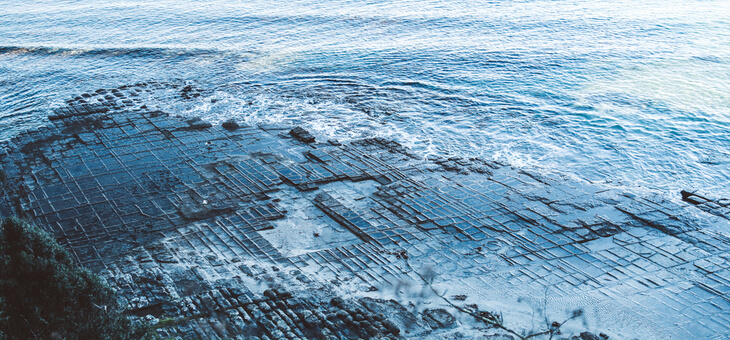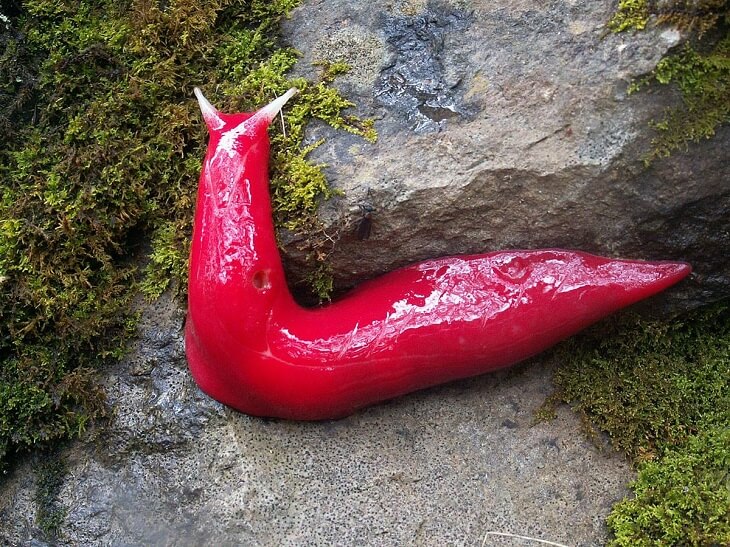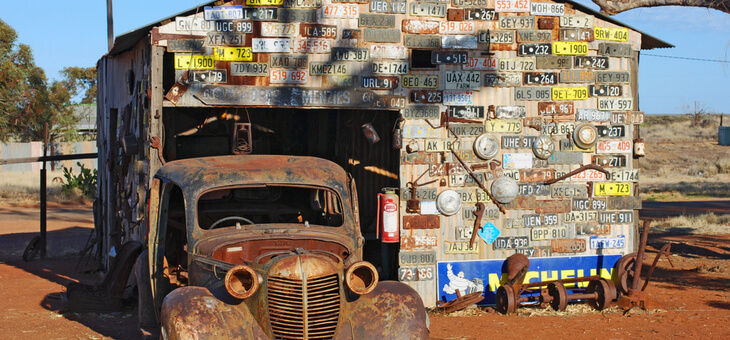Often, it’s the stranger things we stumble across on our travels that are the most memorable, such as these bizarre and brilliant Australian attractions that are either creepy, inspiring, or just a bit odd.
Pirate’s Bay tessellated pavement
Tasmania always ranks high on the list when it comes to natural wonders and this section of the Tasman Peninsula is no different.
The unique geological landscape found in Pirate’s Bay is extremely rare. In fact, tessellated pavement is found in only a few places on earth.
The precise lines marking hundreds of rectangles on the floor look distinctly man-made, however, they are the result of a rare type of natural erosion.

The depressions are made when saltwater wears away the centre portion of the stones into pools, leaving a ridge or outline. The effect gets its name from the resemblance it holds to Roman mosaic floors.
Read: Seven best multi-day Australian walks
Cape Pillar sea cliffs
Staying in Tasmania, the Cape Pillar sea cliffs are the tallest sea cliffs in the southern hemisphere. At a height of more than 300 meters, these cliffs stand guard over the rest of the island.
The two behemoths are separated by dazzling emerald waters and a deep sea cave.

A few champion climbers have tackled these walls, only to be left with tales of rope burn, broken fingers and the great white sharks circling below.
Giant pink slugs of Mount Kaputar
The unique ecosystem atop Mount Kaputar in New South Wales is believed to be the result of exceptional circumstances that have preserved a tiny remnant of Australia’s geological past. Measuring just 10 x 10km this forest is teeming with life found nowhere else in the world.
The most colourful resident here is the giant pink slug. Yes, they look exactly as they sound. They can reach up to 19cm long and are the brightest pink you can think of.

The slugs spend most of their time buried beneath the dead leaves on which they feed but emerge en masse after storms.
The Mad Max Museum
Adrian Bennett loved Mad Max and Mad Max 2: The Road Warrior so much that he threw himself into finding out everything he could about the movies. He sourced props and other artefacts and finally moved to Silverton, NSW – one of the filming locations used in the movies.
It was here that he established his museum, putting his extensive Mad Max collection on display and outfitting his yard like a post-apocalyptic shack.
The museum is not just a place for the devoted Mad Max fans but a place where tourists and locals alike can go and discover what an impact Mad Max 2 had on this region and on the Australian film scene.
Read: Weird and wonderful festivals around Australia
The Flinders Street Station ballroom
Flinders Street Station was opened on 12 September 1854 and was the first railway station built in any Australian city. Now, the transport hub often sees upwards of 100,000 passengers each day, but very few know what lies a few storeys above them.
A glorious, old ballroom occupies the third floor but has been closed to the public since 1985.
The space occupied by the ballroom was originally the lecture hall of the Victorian Railways Institute, an association established to provide “betterment of railway staff”.
Other improvement spaces included a library and room for physical fitness classes. Men got further access to a billiard room, table tennis, and a private gym with a boxing ring and running track on the roof.
The world’s first Indigenous rooftop farm
At 2 Davy Road in Sydney’s South Eveleigh, you’ll find an office building with an unusual feature. It contains a 500 square metre Indigenous rooftop farm.
It all began when friends Clarence Slockee and Christian Hampson, both Indigenous Australians, came up with the idea for a community garden that elevates both native flora and Aboriginal traditions.
To keep the weight down, they were forced to use free-draining soil and plant only species that required little irrigation. In other words, the plants selected are some of the most durable flora native to the country.
So far it has grown over 2000 edible, medicinal and culturally significant plants.
Read: Seven stunning castles you didn’t know were in Australia
Gwalia ghost town and museum
Sitting in the outback east of Perth is an old gold mining town that’s barely been touched for the past 100 years.
Gwalia was erected in the late 1890s around the Sons of Gwalia Mine, once the deepest mine of its kind in Australia.
Mine workers flocked to the town, turning the desert settlement into a booming community.

However, the mine was closed for three years in the 1920s due to a fire and this was the beginning of the town’s demise. Many workers left in search of other jobs and Gwalia’s population never quite recovered.
Historical preservation began in 1971 and today you can wander its deserted and deathly quiet streets.
Which of these fascinating attractions would you most like to see in person? Do you know of any other weird or wonderful things to see in Australia? Why not let us know in the comments section below?
If you enjoy our content, don’t keep it to yourself. Share our free eNews with your friends and encourage them to sign up.

